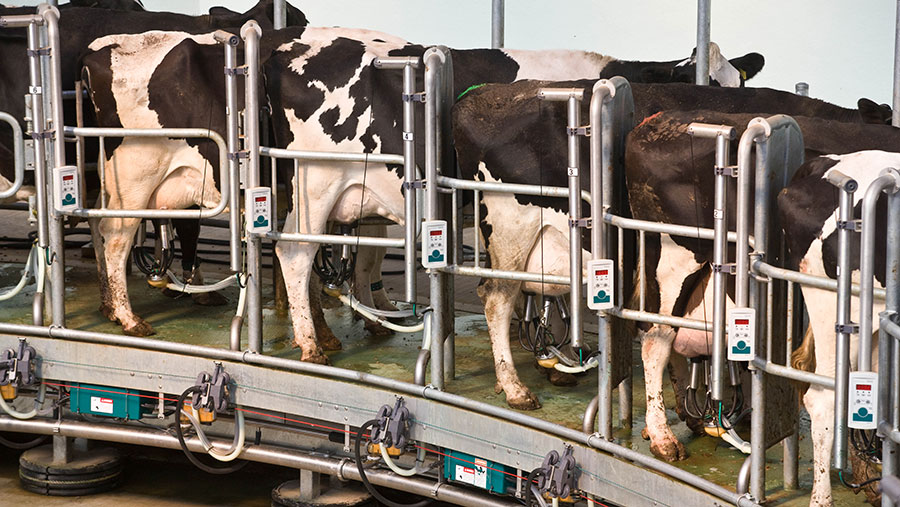Farmgate milk prices expected to fall further during spring
 © Tim Scrivener
© Tim Scrivener High supply and lacklustre demand are putting pressure on milk prices, with processors forecast to make further price cuts during February and March.
UK daily milk deliveries remain about 2% higher than this time last year, while UK wholesale prices for butter, cheddar cheese and cream have been falling since September.
See also: Milk shortages predicted if farmgate prices plunge
Global milk production also remains above last year’s levels, according to industry estimates.
On Tuesday 17 January, wholesale dairy values fell for the third consecutive time at the latest fortnightly Global Dairy Trade event, dropping marginally by 0.1%.
Nick Holt-Martyn, consultant with The Dairy Group, said: “Our latest milk price forecast, based on current prices and the latest market returns, suggests the Defra farmgate price will ease to 49p/litre in January and 47.5p/litre in February.
“March is likely to see a further fall, but with cheese and liquid prices holding up, these should be limited,” Mr Holt-Martyn added.
Prospects appear to be very bearish for the milk market, according to analyst and consultant Chris Walkland. He forecasts that by April, when production typically peaks, milk prices will be in the region of 39p/litre to 44p/litre.
However, he said the biggest danger farmers face is not discretionary pricing or even the large milk price cuts that are coming, but rather the possibility of a processor exiting the sector. “The risk of a processor going bust is as big as it has ever been,” he said.
Controlling costs
Falling milk prices will lead to tighter on-farm margins for producers.
Kite Consulting suggested high cull cow prices should encourage some producers to look at improving efficiency in their herds and selling off any older cows that are underperforming.
AHDB figures show the average dairy-sired cull cow liveweight price for December 2022 was 27.5% higher on the year at 139.47p/kg.
Falling input costs such as feed and fertiliser will help to offset some of the losses from declining farmgate milk prices.
New export opportunities
Dairy exports are estimated to be worth about £1.4bn each year to the sector, and new export deals could offer some support to the marketplace.
The global dairy market is forecast to grow about 2% a year, according to industry estimates. However, only a small volume of UK milk goes into value-added export products.
Demand for dairy globally is growing and is being driven by the Middle East, Africa and Asia, according to Peter Giortz-Carlsen, executive vice-president at Arla Foods.
He said the Chinese market is also reopening and will be a new driver of demand in 2023, following lockdowns for most of 2022.
